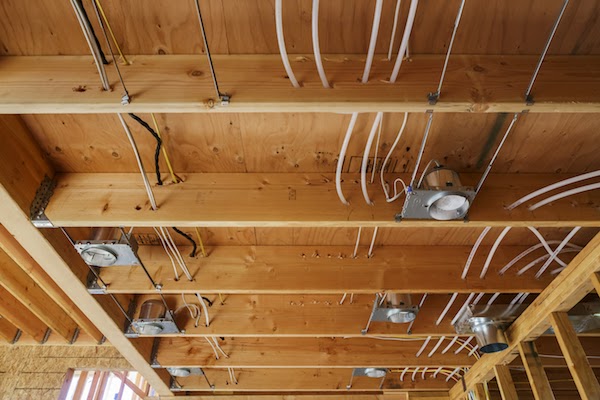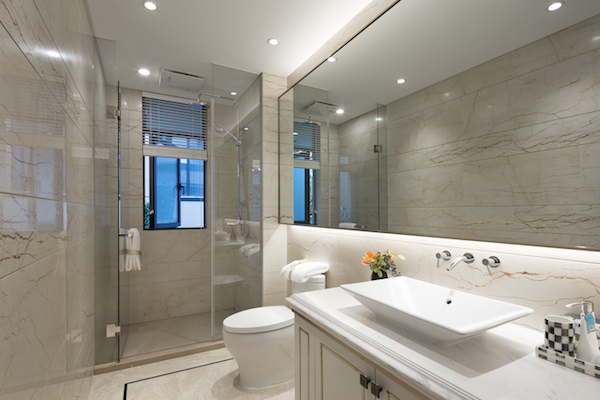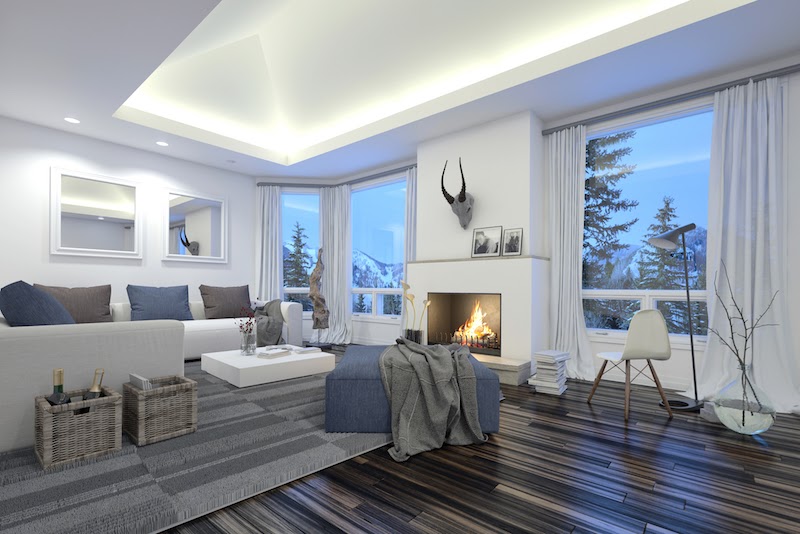The right lighting can completely change a room. If your home is looking a little dark in certain spots, adding some recessed lighting might be the perfect solution. Read on to learn all about recessed lighting and how it can shed some light on your home.
What is Recessed Lighting?
Recessed lighting refers to light fixtures that are installed into a hollow opening in a ceiling, wall, or floor. With the fixture being installed in the hollow space, the light becomes more concentrated, appearing as a narrow spotlight. Recessed lighting provides an alternative to protruding light fixtures, such as chandeliers or other hanging lights. Recessed lights are used to light a room or draw specific attention to an area.
Installation

There are two main components that make up a recessed light fixture. The first component is your house itself that fits around the light. This part of the light includes the hardware which remains hidden within the wall or ceiling. The second component is the trim which will be seen from the outside. Unlike other types of lighting fixtures, recessed lighting does not require as much thought put into the design.
The only factor to consider when installing recessed lights is the trim as this is the only part of the fixture that will be visible. The trim will affect the overall aesthetic of your room. You must decide what depth, size, and style you would like for your trim. All of these factors can be determined by the size of the room. For example, in a larger room, it makes more sense to install recessed lights with a larger trim area and more depth. Whereas in a smaller room, using a smaller trim would be more fitting.
When deciding where to place your recessed lights, if your purpose is to add more light to a certain fixture on a wall or a specific piece of furniture, then begin by centring the light over the desired area. From there, you may then begin to space the rest of the lights, if needed, around the object to highlight other aspects of it. If you are lighting a room with recessed lights, you don’t want to make the mistake of adding too many, or not enough lights. As a baseline, the distance between your lights should be half the height of the ceiling and should never be closer than three feet to a wall.
Pros and Cons

The benefits provided by recessed lighting are mostly in the appearance of the lights, while the cons lie in the functionality of the lights.
Pros
Recessed lighting is different from regular lighting as the light itself becomes the design, as opposed to the fixture. Since most of the fixture is hidden behind a wall or ceiling, you do not have to worry about finding a fixture that is aesthetically pleasing. Recessed lighting is a great alternative to using low hanging chandeliers, especially in a room with low ceilings. The sleek design allows shorter rooms to appear taller and don’t take away any space that is already limited.
While most lighting fixtures are centred in a room, this causes a loss of light around the edge of a room. Recessed lights can be installed close to walls to light the edges and corners of a room. Recessed lights are also available with a waterproof cover so they can be installed in showers without any safety concerns.
Cons
The downfall of recessed lighting is that since they are so small, in order to light a larger area, you will have to install multiple — possibly increasing the pricing of your lighting project. On top of this, the more lights installed, the more holes created on the wall or in the ceiling. During the colder months, heat tends to escape through these holes, which can cause your heat bill to be increased.
Recessed lights are a great alternative to traditional protruding fixtures. Their sleek design allows them to be used in smaller areas while not taking away any space and all while keeping a room very well lit. When you’re ready to add recessed lighting to your home, simply click on the banner below to get in touch with pros in your area. Your home will be better lit in no time!
